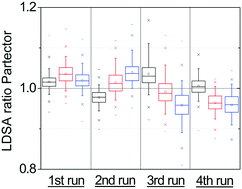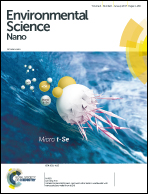On the effect of wearing personal nanoparticle monitors on the comparability of personal exposure measurements
Abstract
Personal inhalation exposures to airborne agents, including nanomaterials, are ideally measured in the breathing zone, using personal monitors or samplers. It is known from previous studies that the available personal monitors can measure airborne nanomaterial concentrations under laboratory conditions with an accuracy and comparability of ±30% or better. However, it is unclear whether this level of accuracy and comparability can also be achieved when these instruments are used as personal monitoring devices by individuals carrying out a wide variety of activities. In the present study, we investigated the reliability of DiSCmini and Partector during simulated exposure measurements. Two individuals were equipped with two identical instruments each, one mounted near the left and the other near the right collarbone. Both individuals went through a sequence of pre-determined and controlled activities, while simultaneously being exposed to well-defined NaCl aerosols within a 23 m3 chamber. A third specimen of both instruments was placed on a table in the middle of the chamber. The results of the Partector, mounted directly on the left or right side lapel within the personal breathing zone, agreed very well with each other and with the results from the third Partector on the table. The deviations were typically within ±10%. The scatter of the data was found to be larger when the individuals were walking than when they were sitting but the average concentrations remained unaffected by the activities. It can hence be concluded that the positioning of the sampling inlet within the breathing zone does not affect the measurement result, independent of personal activities and whether the carrying person is left- or right-handed. In contrast, the DiSCmini results showed very large deviations of up to a factor of three. However, this was caused by the use of silicone tubes in order to sample air from the personal breathing zone and transport to the belt mounted instruments. Siloxanes degas from the tubes into the airflow and are ionized in the unipolar diffusion charger of the DiSCmini and hence change the charging characteristics significantly affecting the measurement results.

- This article is part of the themed collection: Celebrating the 150th anniversary of the German Chemical Society

 Please wait while we load your content...
Please wait while we load your content...